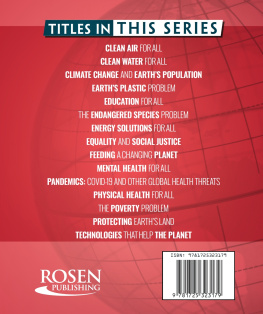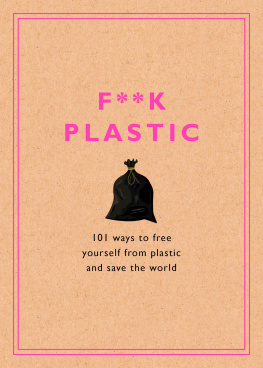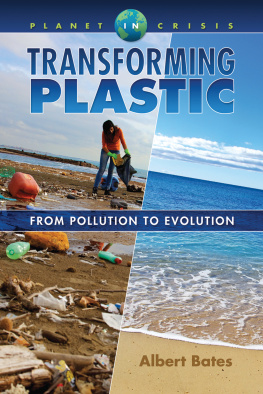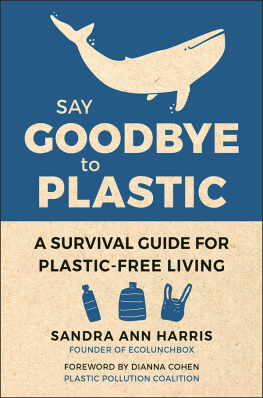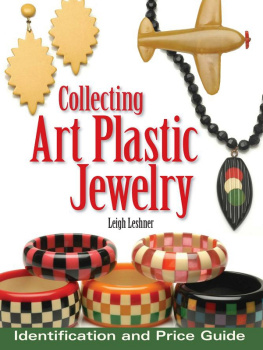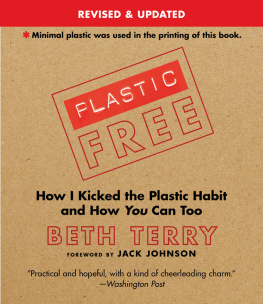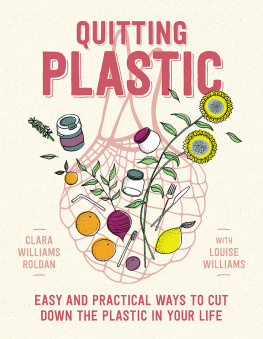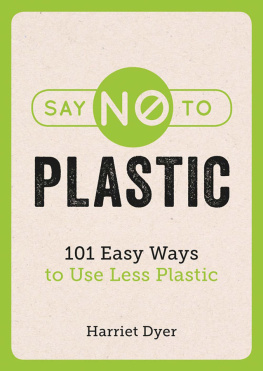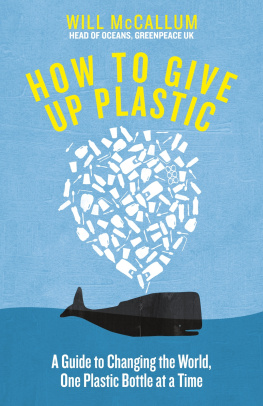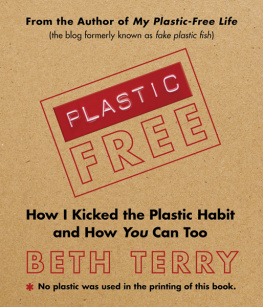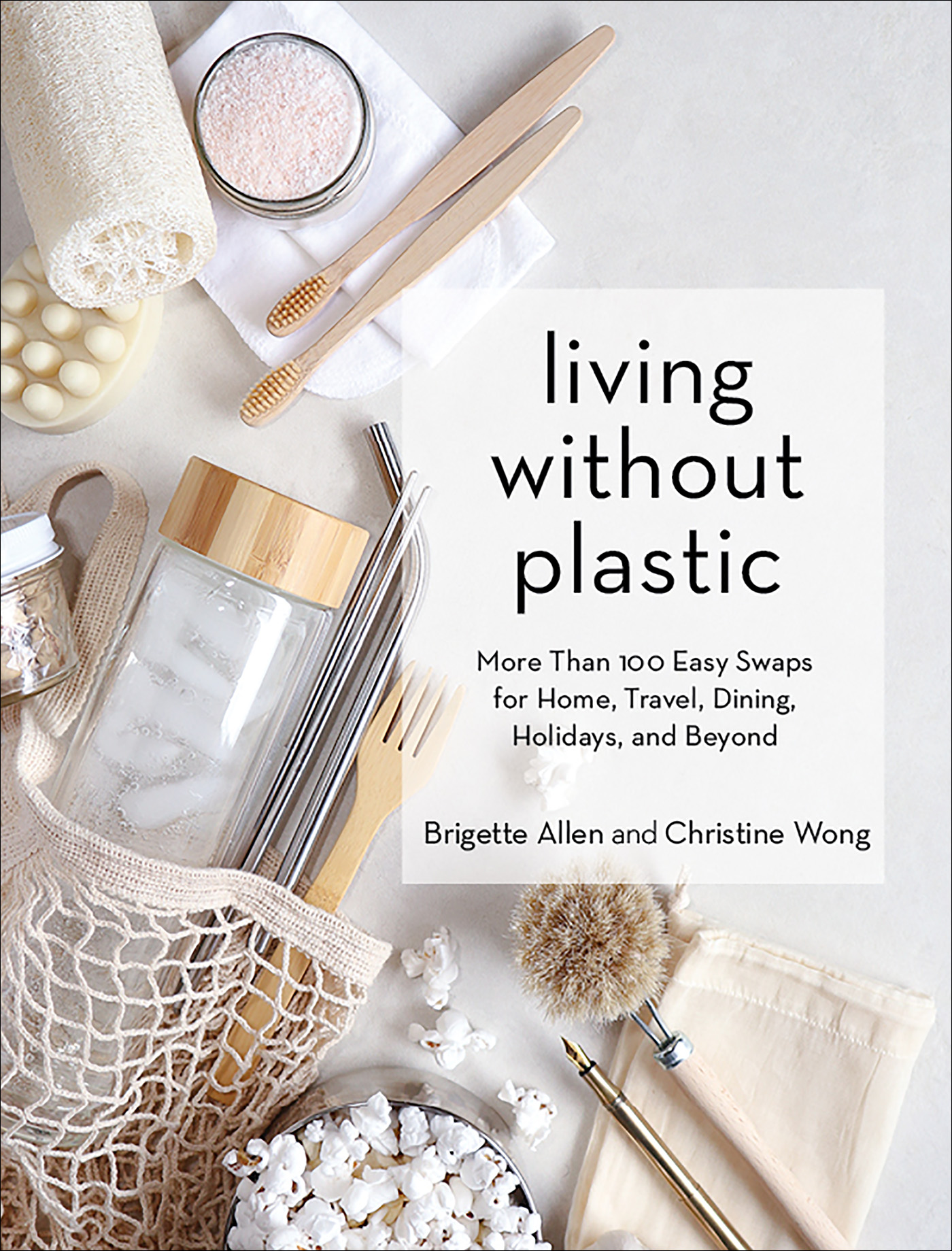Contents
Guide
Page List

living without plastic
More than 100 Easy Swaps for Home,
Travel, Dining, Holidays, and Beyond
Brigette Allen and Christine Wong

Contents
Foreword
Plastic is an incredible invention that has helped democratize the world. Plastics have improved modern life, from food safety and access to goods and transportation, to medical sanitation and more.
Unfortunately, the ubiquity of plastic demonstrates that we do not have just a simple plastic habit, but rather a serious relationship with it. Versatile, lightweight, durable, and affordable, plastic is a difficult material to replace. And yet despite the growing evidence of the negative impacts of plastic on the environment, animal health, and even human health, many people find it difficult to end this very convenient relationship. We are faced with the dilemma of trying to find a balance between human convenience and environmental impact.
Fortunately, this type of dilemma is not new. Our relationship to our environmentwhether personal or physicaldevelops for a reason. As we learn new information and gain new perspectives, we grow and change.
Now more than everfor the good of our health, our families and friends, and our planetwe need to change our relationship with plastic.
Sometimes good things fall apart so better things can fall together. Marilyn Monroe
Living Without Plastic demonstrates how new perspectives come together to help us reduce our use of plastic. Rethinking plastic can start with a single change, and the solutions found in this book show the wonderful opportunities to move forward with plastic alternatives. The accompanying facts provide new insight on the large reach of the harm caused by plastic and help support our choice to make changes.
Plastic is integrated into every aspect of our lives. It can feel like a monumental task to change the way you interact with so many of your daily items, whether its your cup of coffee or the spoon you use to stir it. However, Christine and Brigette have left no stone unturned and fully delve into sourcing various alternatives and solutions, presenting the options in a way that allows us to select one small swap or all of them, in a way that best fits our lives.
This book represents the power we have as individuals and how, together, our actions create social changea change away from plastic pollution and toward a better you and a better planet.
Julie Andersen
Plastic Oceans International
Introduction
It would be difficult to get through your day without encountering plastic. It is in virtually everything we useelectronics, cars, furniture, building materials, clothes, shoes, medical equipment, and kitchen appliances. It is also prevalent with single-use packaging like water bottles and shopping bags that are used for only a short period of time and then discarded. While it is convenient and inexpensive, plastic does not biodegrade, so it accumulates in landfills and in our environment. This book explores the most common plastic items we use on a daily basis in our homes and offices and on the go so you can identify where you use plastic most in your life and adopt simple solutions to reduce your usage. Each swap or adjustment we implement will make a difference.
History
The earliest plastic was made from plant cellulose, not petroleum, and was created in the late 1800s as a solution to replace materials acquired inhumanely, such as ivory and tortoiseshell, which were used to make such common items as combs and billiard balls. In fact, decades later in the 1940s, Henry Ford, who brought cars to the masses with the assembly line, developed a concept car made from soy-derived cellulose, but World War II put an end to its commercialization because of wartime rationing.
In 1907, the Belgian chemist Leo Baekeland made the worlds first fully synthetic plastic, which he called Bakelite. Unlike cellulose, it was cheap to produce and could be molded into numerous objects, such as dishware, jewelry, clocks, telephones, and more. During World War II, synthetic plastics were mass-produced as substitutes for natural materials such as cork in life jackets and silk in parachutes. By the end of the war, the petrochemical industry was eager to stay in business, so they invented single-use plastic items for the home, such as plates, cutlery, and cups. These items came with the promise to consumers of convenience and freedom from household chores, and by the early 1960s, single-use plastic infiltrated everyday life. By the 1970s, by volume, plastic as a raw material was more widely used than aluminum or steel. In the mid-1980s, more than 100 million tons of plastic were produced, and by 2015 this amount had more than quadrupled to 448 million tons, with the bulk of it being used for packaging.
The Good
While single-use plastic is seemingly unavoidable nowadays, not all of its uses are bad. In the medical world, for example, plastic is an excellent material to use for incubators, tubes, and syringes to efficiently avoid cross-contamination. After a natural disaster, packaged items such as fresh water and nonperishable foods can save lives. When used in longer-life applications, such as in cars, laptops, and airplanes, plastic makes these items lighter and more durable and, therefore, more efficient.
The Bad
Half of all plastic produced becomes trash in less than a year. This lightweight, chemically toxic material never biodegrades but eventually breaks up into what are known as microplasticsfragments smaller than one-fifth of an inch (5 mm). These particles have reached every corner of the earth, from the highest mountains to the deepest seas, and are impossible to clean up.
The Ugly
Plastic waste is impacting our environment. Every piece of plastic ever made still exists in some shape or form in the air, on land, and in waterways and oceans. There are already an estimated 165 million tons of plastic in the ocean. Microplastics have infiltrated the food chain, from the phytoplankton that ingest the synthetic particles to the fish that feed on the plankton to, eventually, the food on our plates. The chemical compounds found in plastic that are introduced into our bodies can cause hormonal imbalance, reproductive problems, nervous system damage, obesity, cancer, and heart disease. In addition, millions of animals are killed or injured every year by ingesting or becoming entangled in plastic debris. Petrochemical plants that produce the primary building blocks for plastic are often located in neighborhoods of color, where people suffer from a disproportionate number of cases of cancer and other health problems.
Greenwashing
Greenwashing is a deceptive way of marketing to promote a process or product that is said to be better for the environment but isnt always. In our efforts to be more eco-friendly, we have come to rely on these methods and materials.
Recycling
Weve been led to believe that recycling is the solution to dealing with an accumulation of plastic, but only 9 percent of all the plastic ever made has been recycled. For the past few decades, many nations were sending their plastic refuse to China for recycling, but in 2017 the nation changed its policies. The following year the country enforced stricter and more rigorous standards because it became too expensive and difficult to recycle plastics that were often contaminated with food waste, mixed with other materials, or made of types of plastics that couldnt be recycled. With nowhere left to go, our plastic is being stockpiled, sent to landfills, incinerated, or winding up in our environment. The recycling process is complicated (see ), and manufacturers find it cheaper to make products out of virgin plastic pellets (called nurdles) than recycled plastic. In addition, items made from recycled plastic can only be recycled a handful of times; unlike glass and aluminum, the quality of plastic degrades with every iteration.


